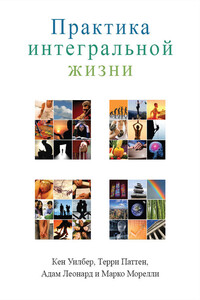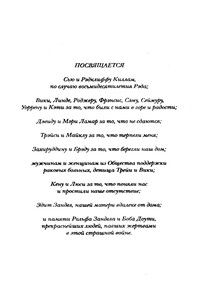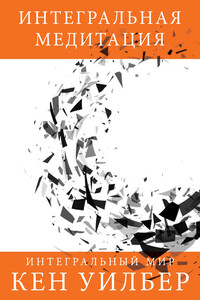[84]. Coomaraswamy, A. K. Recollection, Indian and Platonic. Supplement to JAOS, no. 3, 1944.
[85]. Coomaraswamy, A. K. Time and eternity. Ascna: Artibus Asial, 1947.
[86]. Coomaraswamy, A. K. The dance of Shiva. New York: Noonday, 1957.
[87]. Cooper, D. Psychiatry and anti‑psychiatry. New York: Ballantine, 1971.
[88]. Corsini, R. Current personality theories. Itasca: Peacock, 1977.
[89]. Dasgupta, S. B. An introduction to tantricBuddhism. Berkeley: Shambhala, 1974.
[90]. Davidson, J. The physiology of meditation and mystical consciousness. PerspectiveBiology Medicine, Spring, 1976.
[91]. Dean, S. (ed.) Psychiatry and mysticism. Chicago: Nelson Hall, 1975.
[92]. Deikman, A. De‑automatization and the mystic experience. Psychiatry, vol. 29, 1966.
[93]. Desoille, R. The waking dream in psychoterapy. Paris: Presses Universitaires de France, 1945.
[94]. Deutsche, E. Advaita vedanta. Honolulu: East‑West Center, 1969.
[95]. Dewey, J. andBently, A. F. Knowing and the known. Boston: Beacon, 1949.
[96]. Dewey, J. and Tufts, J. Ethics. New York: Holt, Rinehart, Winston, 1908.
[97]. DiLeo, J. Child development, New York: Brunner/Mazel, 1977.
[98]. Duncan, H. Symbols in society. New York: Oxford Univ., 1968.
[99]. Edgerton, F. (trans). TheBhagavad Gita. New York: Harper, 1964.
[100]. Edinger, E. F. Ego and archetype. Baltimore: Penguin, 1972.
[101]. Ehrmann, J. (ed.) Structuralism. New York: Anchor, 1970.
[102]. Eisendrath, C. The unifying moment. Cambridge: Harvard, 1971.
[103]. Eliade, M. The myth of eternal return. New York: Pantheon, 1954.
[104]. Eliade, M. The sacred and the profane. New York: Harvest, 1959.
[105]. Eliade, M. Shamanism. New York: Pantheon, 1964.
[106]. Eliade, M. Images and symbols. New York: Sheed and Ward, 1969.
[107]. Eliot, C. Hinduism andBuddhism, vols. 1–3. New York: Barnes and Noble, 1968.
[108]. Erikson, E. Childhood and society. New York: Norton, 1963.
[109]. Erikson, E. Insight and responsibility. New York: Norton, 1964.
[110]. Evans‑Wentz, W. The Tibetanbook of the Dead. London: Oxford Univ., 1968.
[111]. Evans‑Wentz, W. The Tibetanbook of the great liberation. London: Oxford Univ., 1968.
[112]. Evans‑Wentz, W. Tibetan yoga and secret doctrines. London: Oxford Univ., 1971.
[113]. Fadiman, J., and Frager, I. (ed.) Personality and personal growth. New York: Harper, 1976.
[114]. Fadiman, J., and Kewman, D. (ed.) Exploring madness. Calif.:Brooks/Cole, 1973.
[115]. Fagan, J., and Sheperd, I. (ed.) Gestalt therapy. New York: Harper, 1970.
[116]. Fairbairn, W. Psychoanalytic studies of the personality. London: Tavistock, 1952.
[117]. Fairbairn, W.. An object‑relations theory of the personality. New York: BasicBooks, 1954.
[118]. Farber, L. The ways of the will. New York: BasicBooks, 1945.
[119]. Federn, P. Ego psychology and the psychoses. New York: BasicBooks, 1952.
[120]. Fenichel, O. The psychoanalytic theory of neurosis. New York: Norton, 1945.
[121]. Ferenczi, S. Stages in the development of the sense of reality. In Sex and psychoanalysis. Boston: Gorham, 1956.
[122]. Ferenczi, S. Thalassa. New York: The Psychoanalytic Quarteque, 1938.
[123]. Ferenczi, S. Furter contributions to the theory and technique of psychoanalysis. New York: BasicBooks, 1952.
[124]. Festinger, L. Theory of cognitive dissonance. New York: Peterson, 1957.
[125]. Feurstein, G. A. Introduction to theBhagavad Gita. London: Rider, 1974.
[126]. Feurstein, G. A. Texbook of yoga. London: Rider, 1975.
[127]. Fingarette, H. The self in transformation. New York: BasicBooks, 1963.
[128]. Flugel, J. Man, morals and society. New York: International Universities Press, 1945.
[129]. Foulkes, D. A grammar of dreams. New York: BasicBooks, 1978.
[130]. Frank, J. Nature and Function ofbelief systems: humanism and transcendental religion. American Psychologist, vol. 32, 1977.
[131]. Frankl, V. Man’’s sears for meaning. New York: Washington Square, 1963.
[132]. Freemantle, F., and Trungpa, С The Tibetanbook of the dead. Berkeley: Shamabhala, 1975.
[133]. Fremantle, A. The Protestant mystics. New York: Mentor, 1965.





